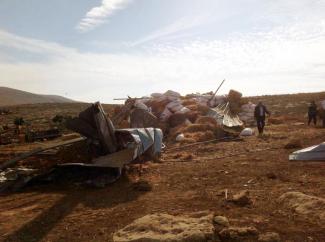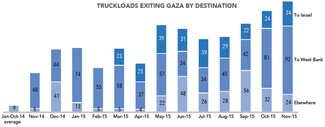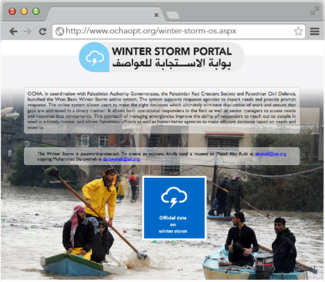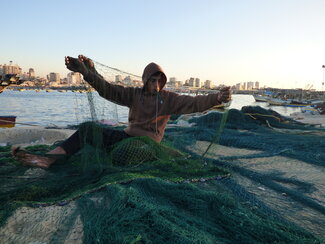By the end of 2015, 136 Palestinian deaths and nearly 14,000 injuries had been recorded in the West Bank and Israel in the context of attacks and clashes, the largest yearly figure since OCHA began its records in 2005. Figures for Israeli casualties resulting from Palestinian attacks were also some of the highest since 2008 (24 deaths and 350 injuries). The bulk of the casualties were recorded in the last quarter of the year, in a wave of violence characterized by almost daily stabbing and ramming attacks by non-affiliated Palestinians, and widespread protests and clashes. The targeting of Israeli civilians and the excessive use of force by Israeli military and police have remained major concerns throughout this period.
The Monthly Humanitarian Bulletin | December 2015
Israeli measures in November and December target twelve vulnerable Palestinian herding communities in Area C of the West Bank. The volume of goods marketed outside Gaza in 2015 (Jan-Nov) increased more than five-fold compared with 2014. The 2016 Humanitarian Response Plan for the OPT requests US$571 million for a range of interventions, 19 per cent lower than that of 2015.
In this document
In November and December 2015, Israeli measures increased against at least twelve vulnerable Palestinian herding communities in Area C, the majority of them in the Jordan Valley (see map). These measures included the destruction or confiscation of residential structures, animal shelters and basic infrastructure; the issuance of demolition orders; and the temporary eviction of residents for Israeli military training. Some of the structures and items targeted had been provided by international organizations as humanitarian assistance. Together with the severe restrictions on access to grazing land, a coercive environment has been created persuading residents to leave.
During November 2015, a total of 150 truckloads of commercial goods left Gaza, the largest figure in a single month since the imposition of the blockade in June 2007. This brings the number of truckloads marketed outside Gaza between January and November 2015 to 1,138, a five-fold increase over all of 2014. The volume of imports into the Gaza Strip also increased significantly during 2015.
In advance of the upcoming winter season, and for the third consecutive year, OCHA upgraded and relaunched the West Bank Winter Storm online system in December 2015. This was accomplished in close coordination with various governorates of the Palestinian Authority, the Palestinian Red Crescent Society (PRCS) and Palestinian Civil Defense (PCD), and with the participation of humanitarian NGOs and UN agencies.
Twice a year, from April to mid- June and from mid-September to November, the sardine season dominates the agenda of fishermen in the Gaza Strip. Sardines historically make up 60 percent of the total fish catch and form the bulk of the income of Gazan fishermen.













